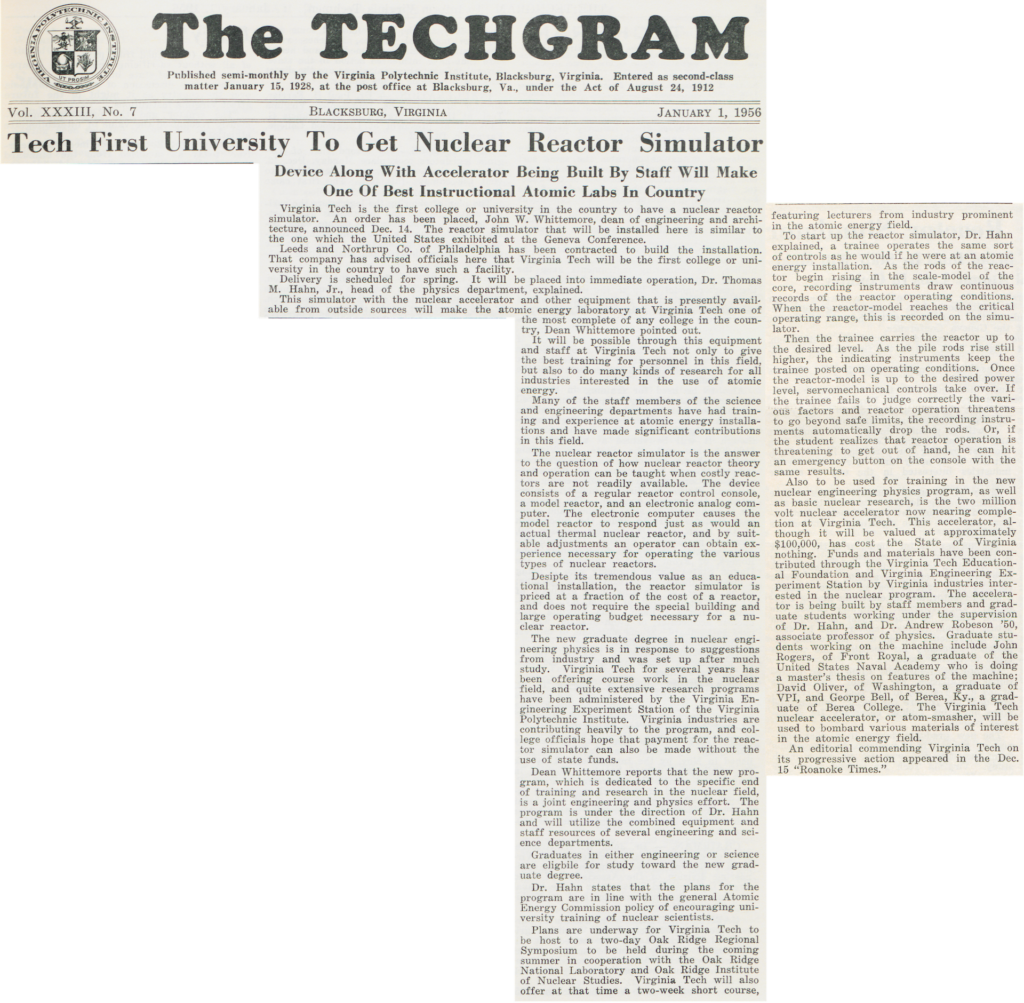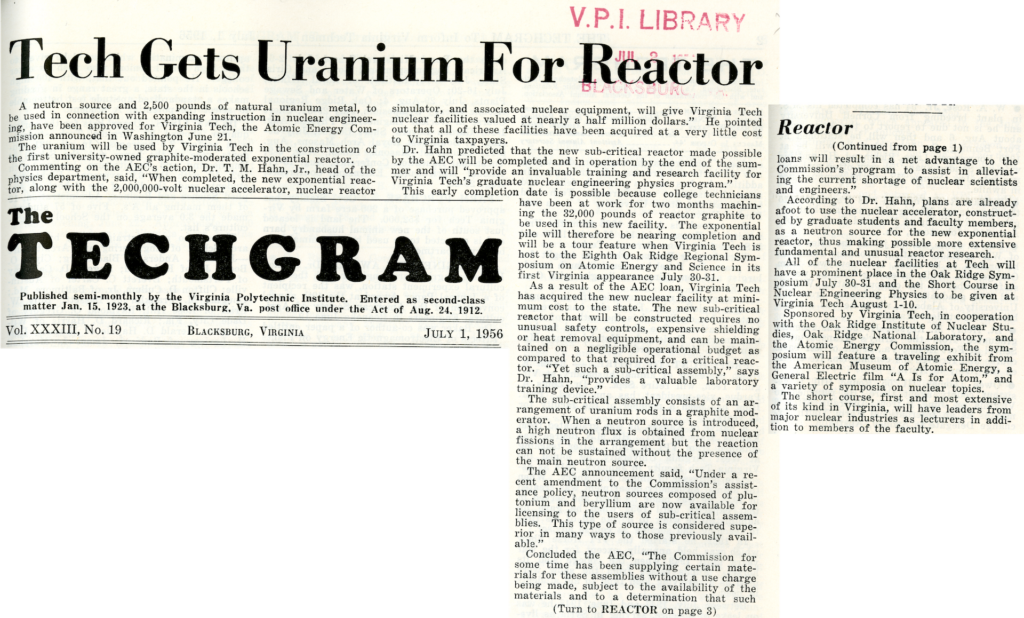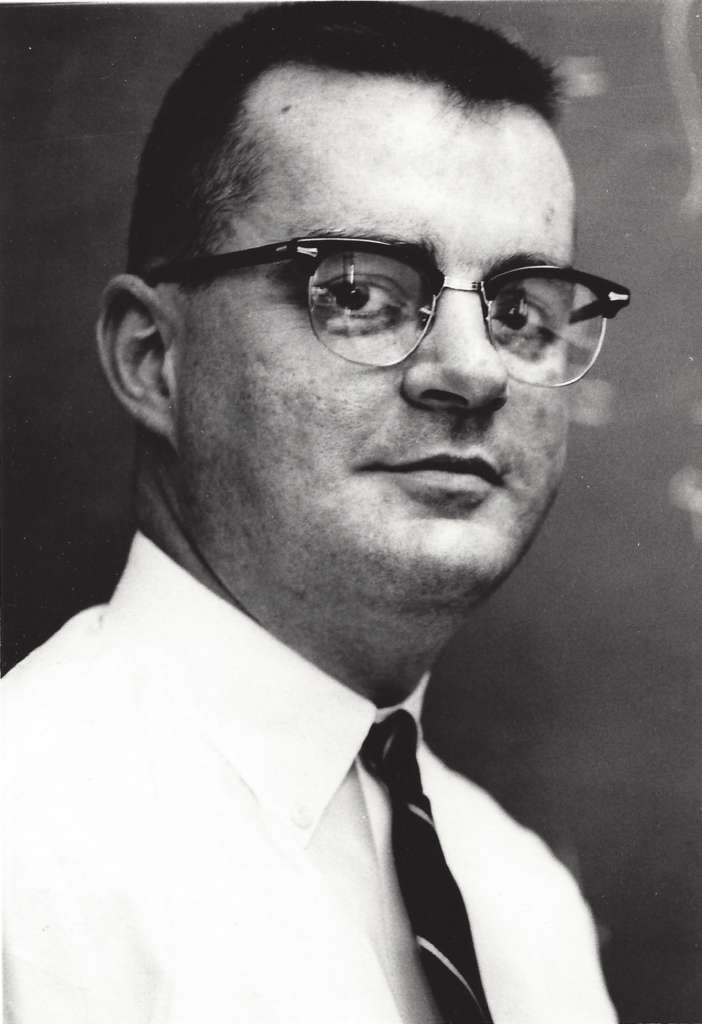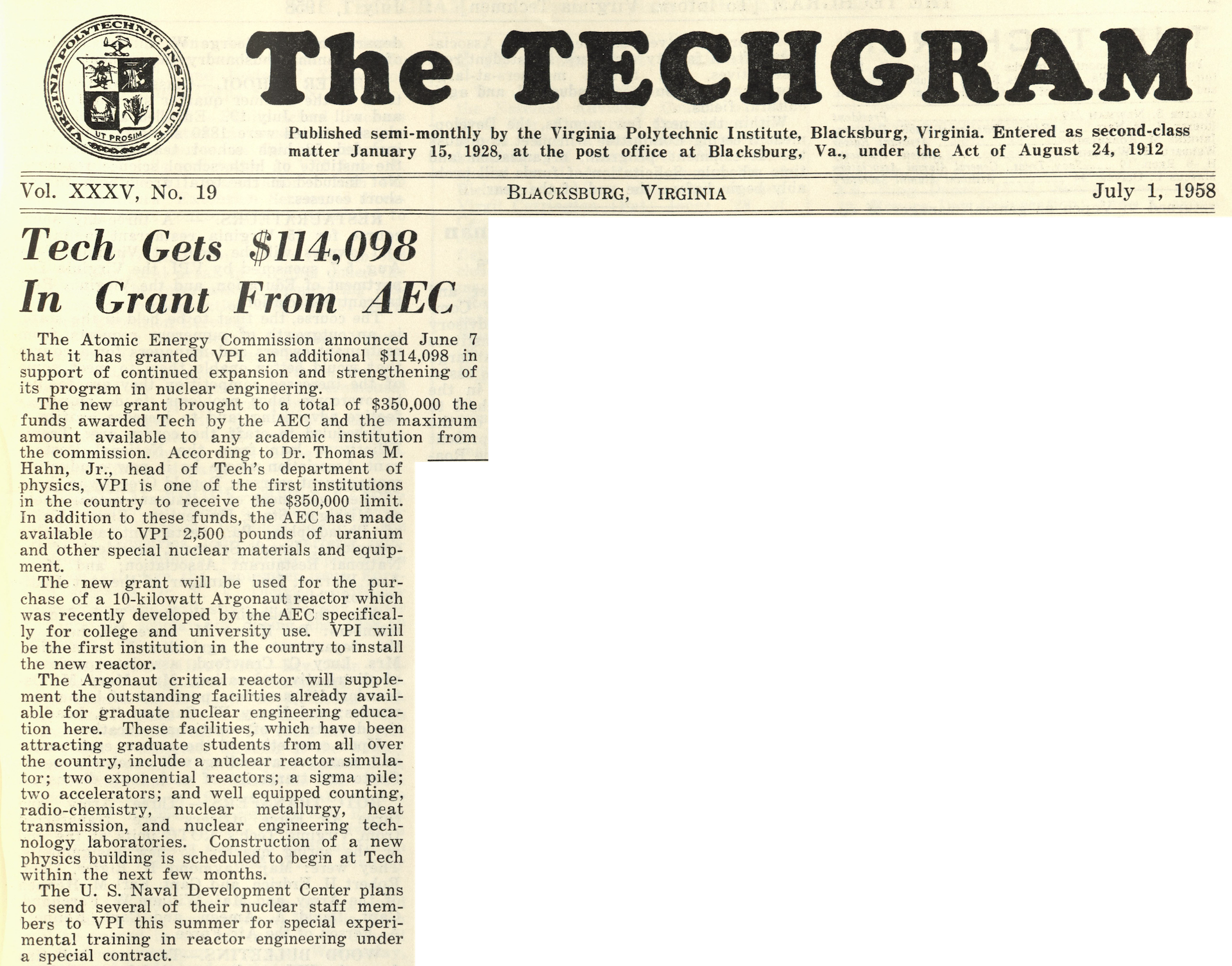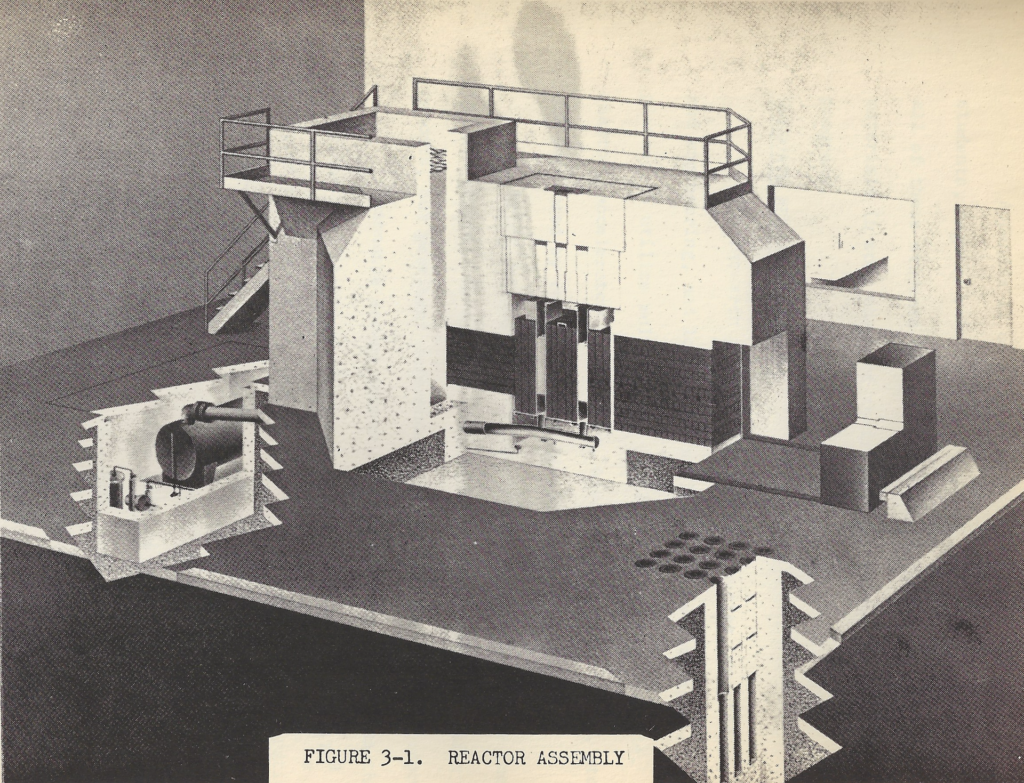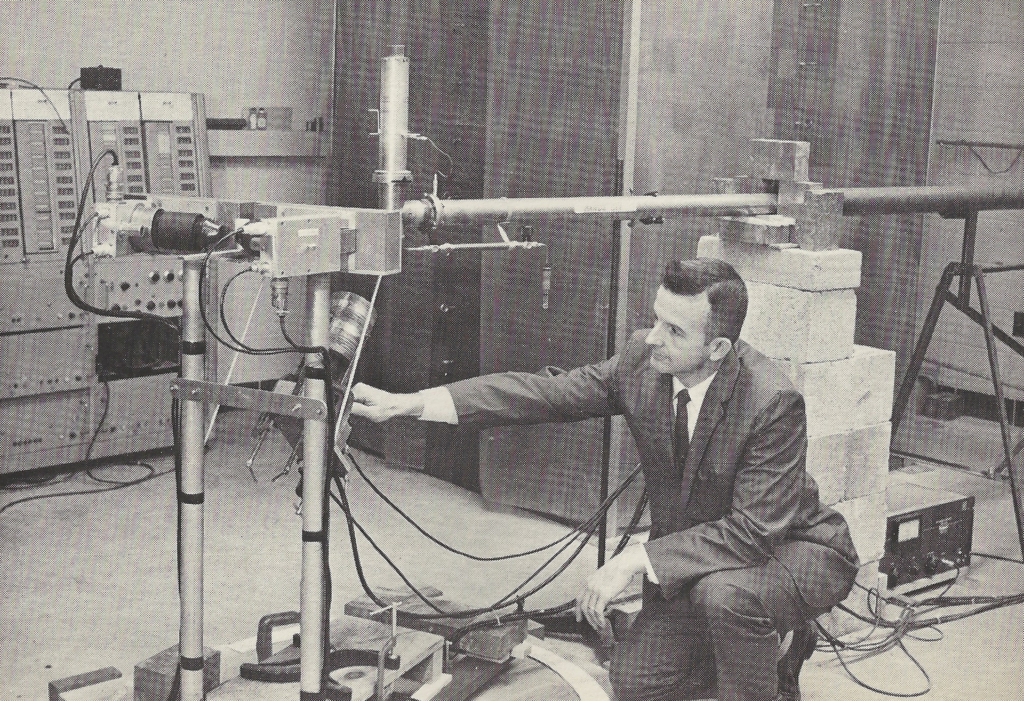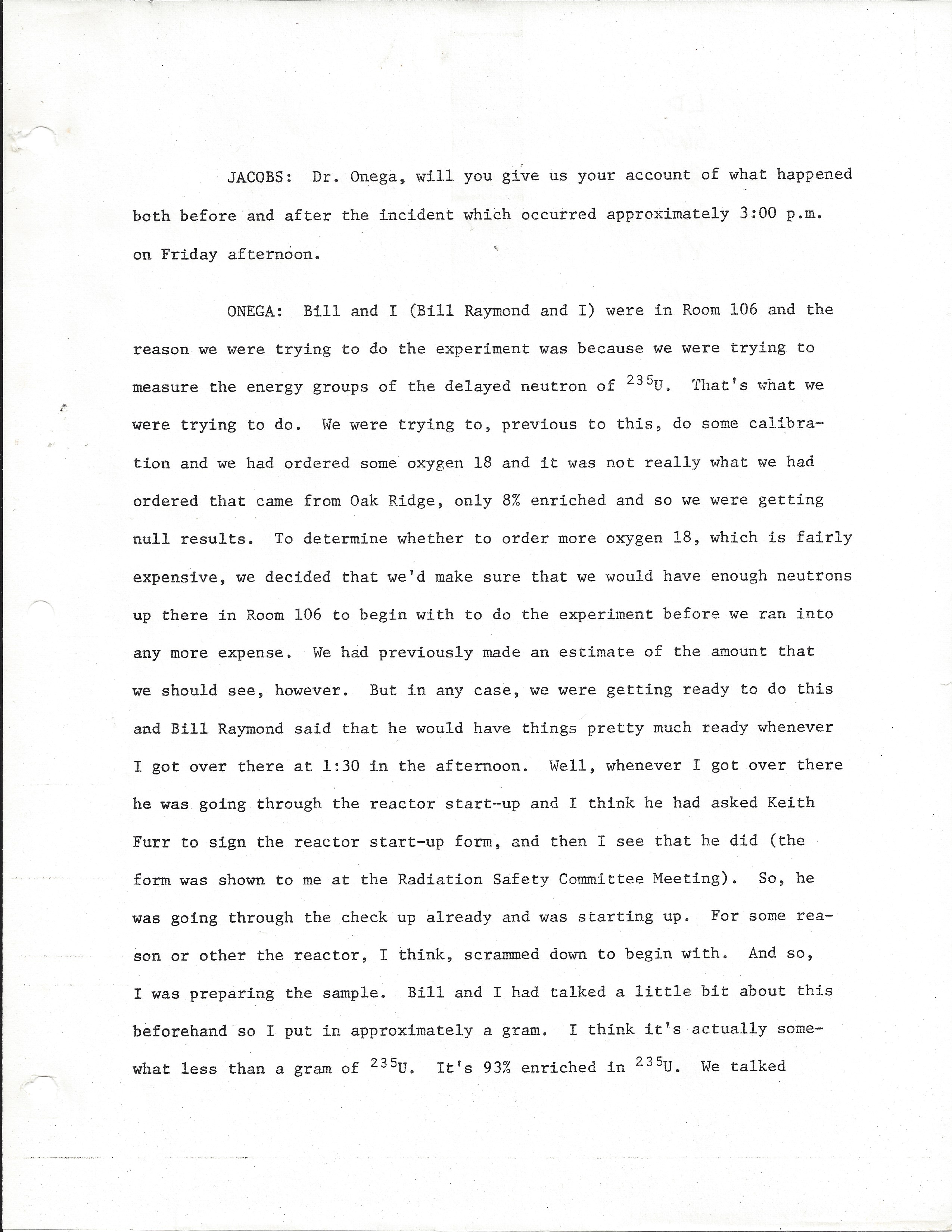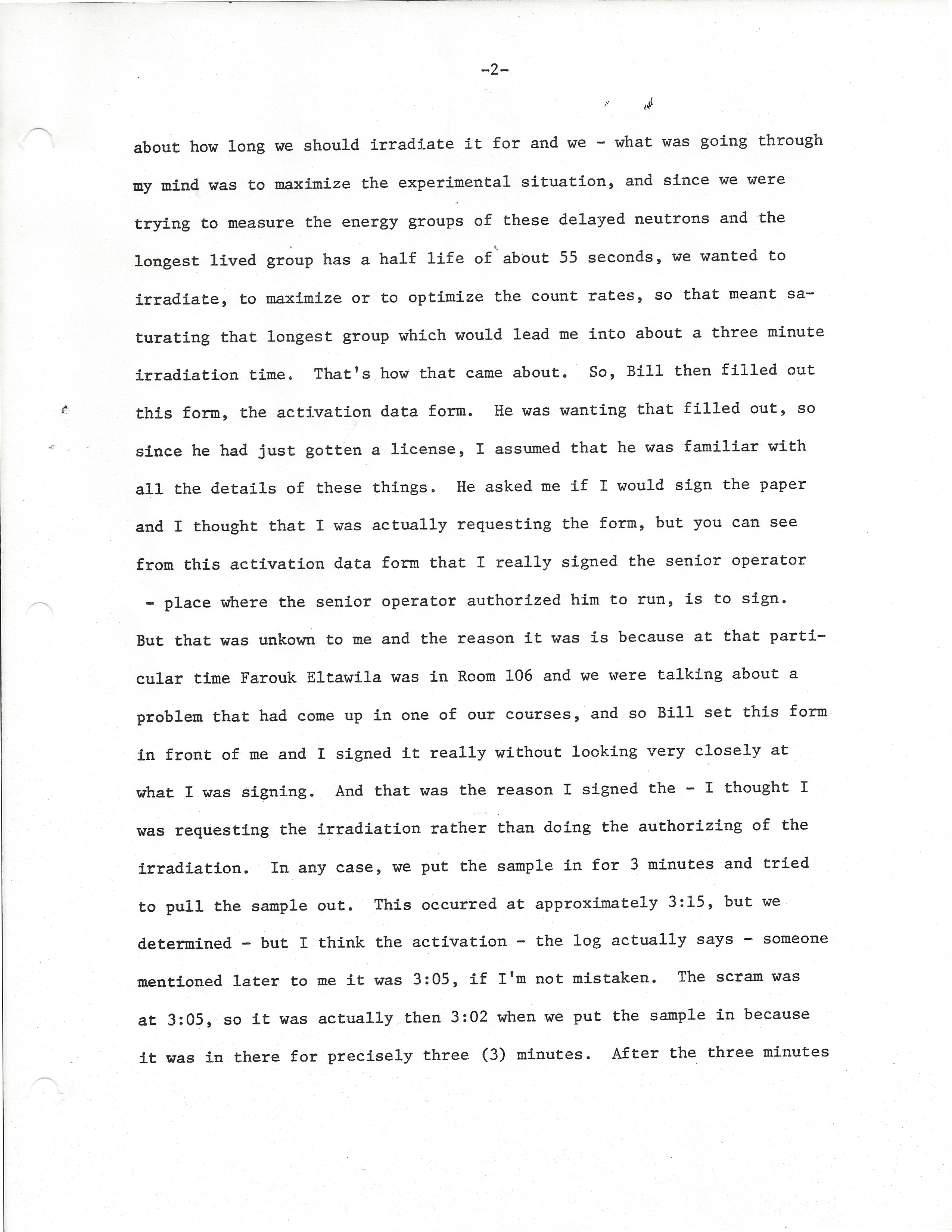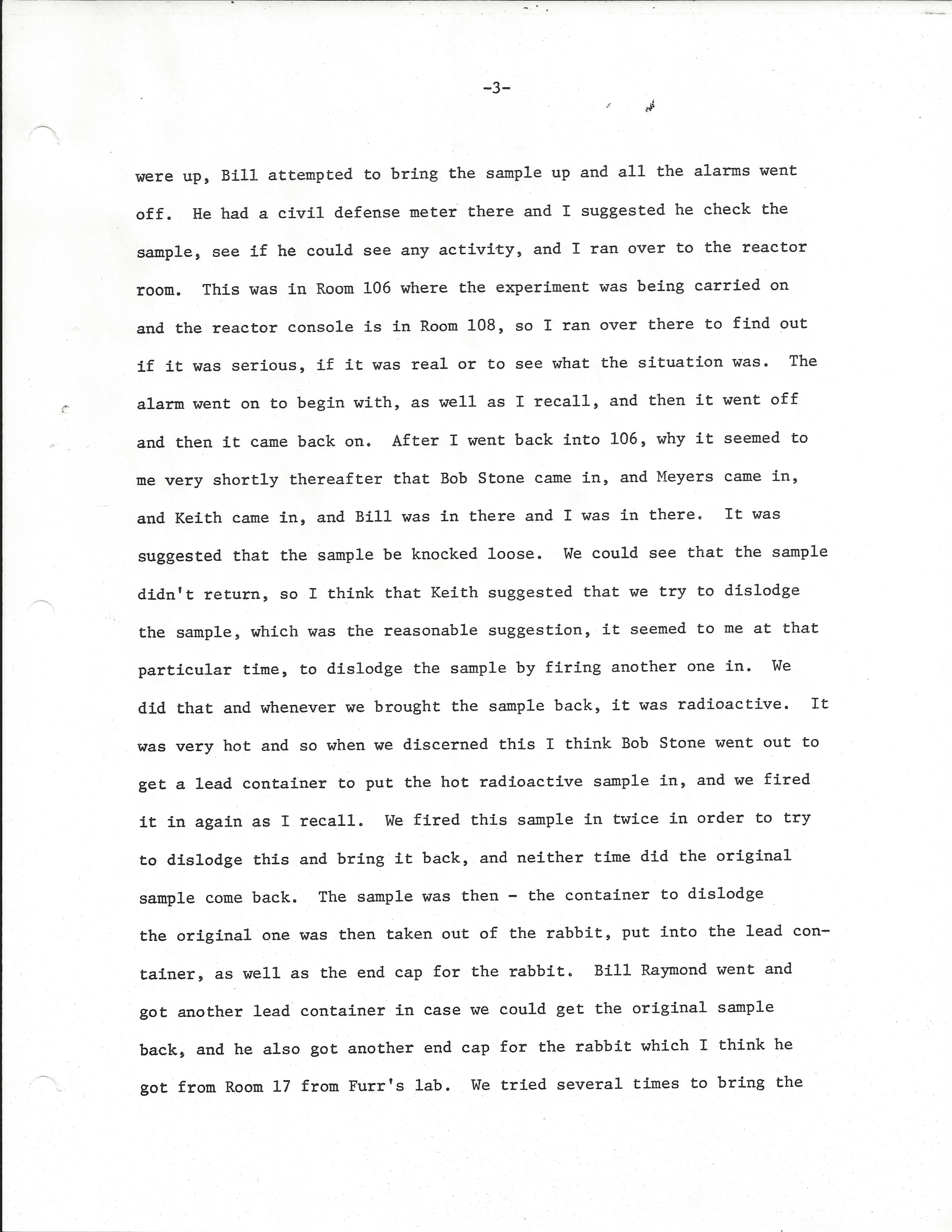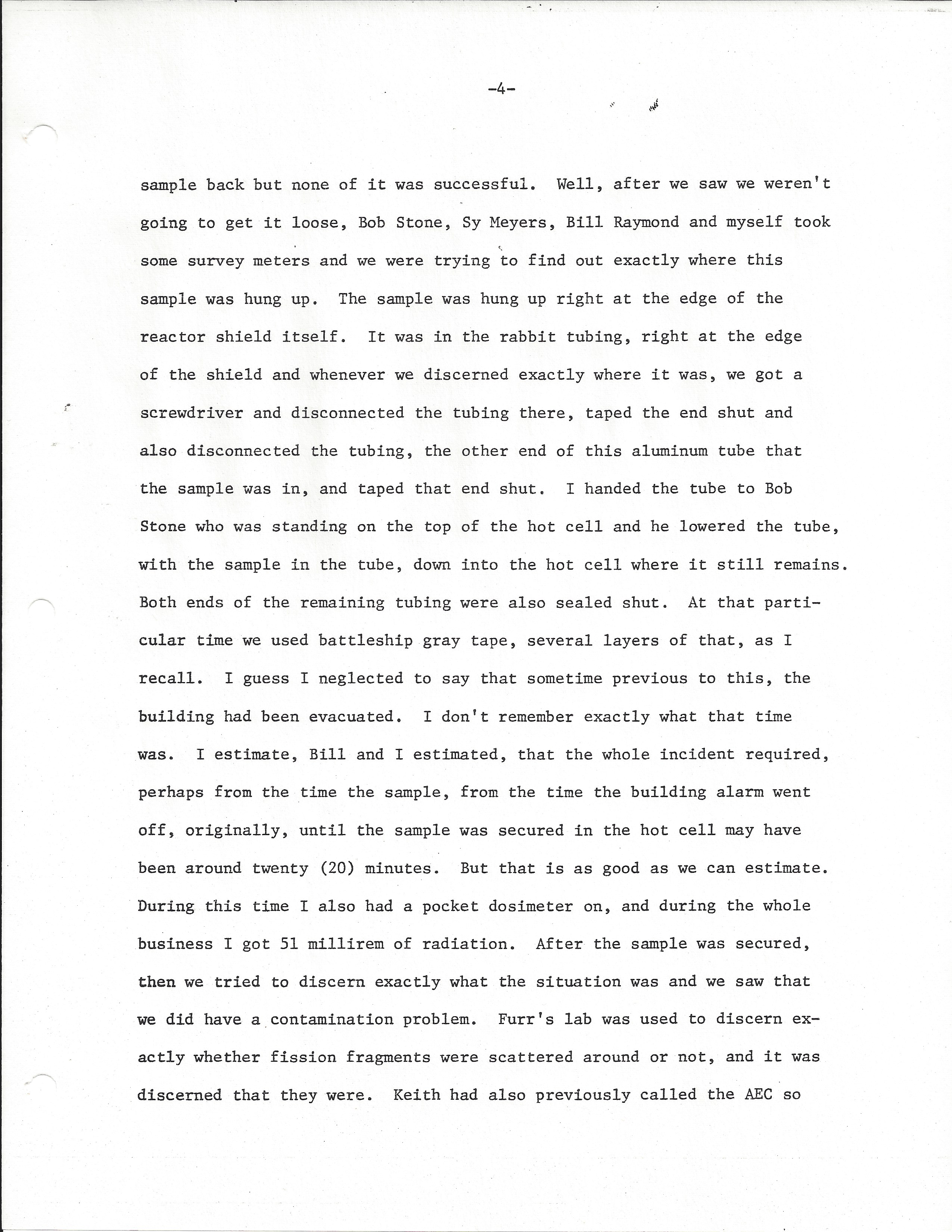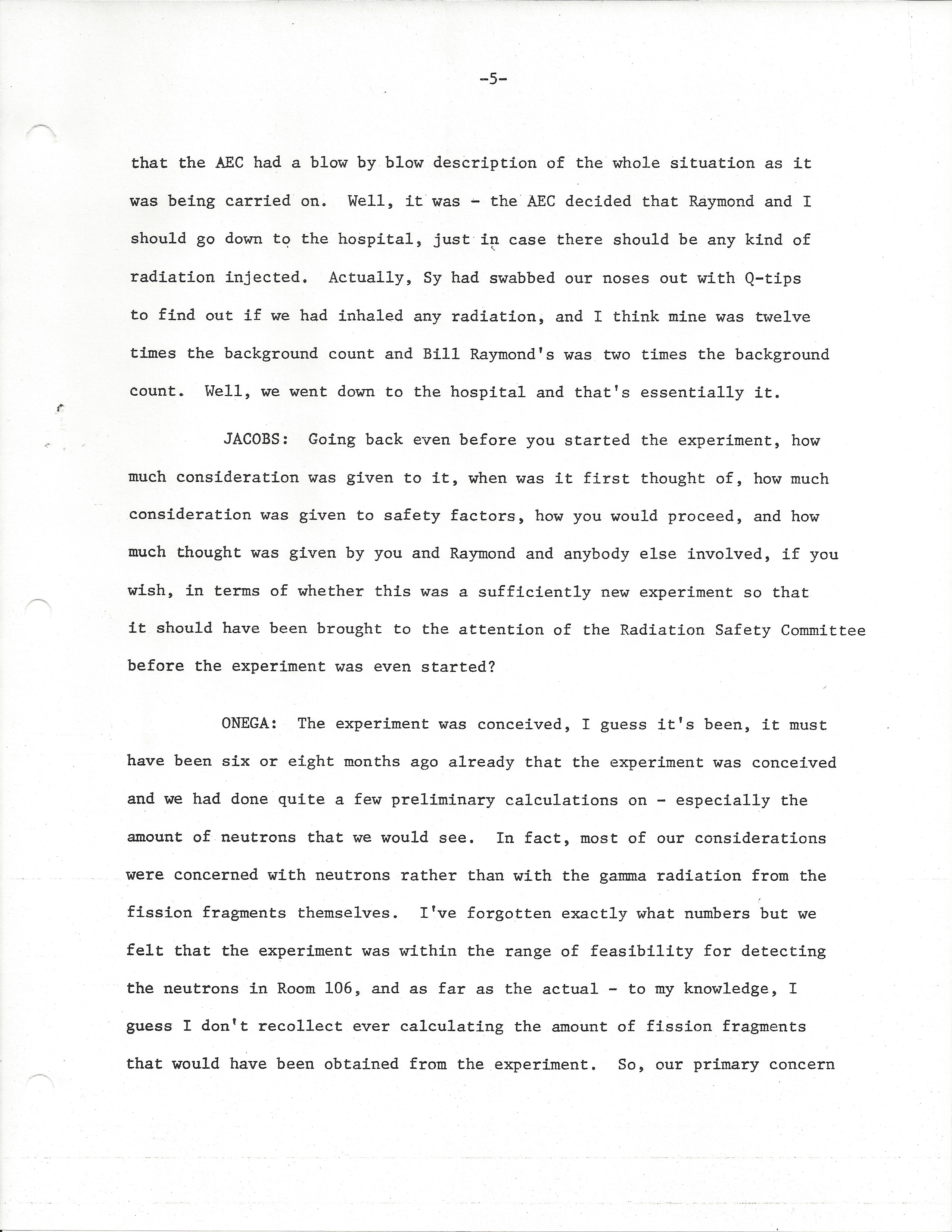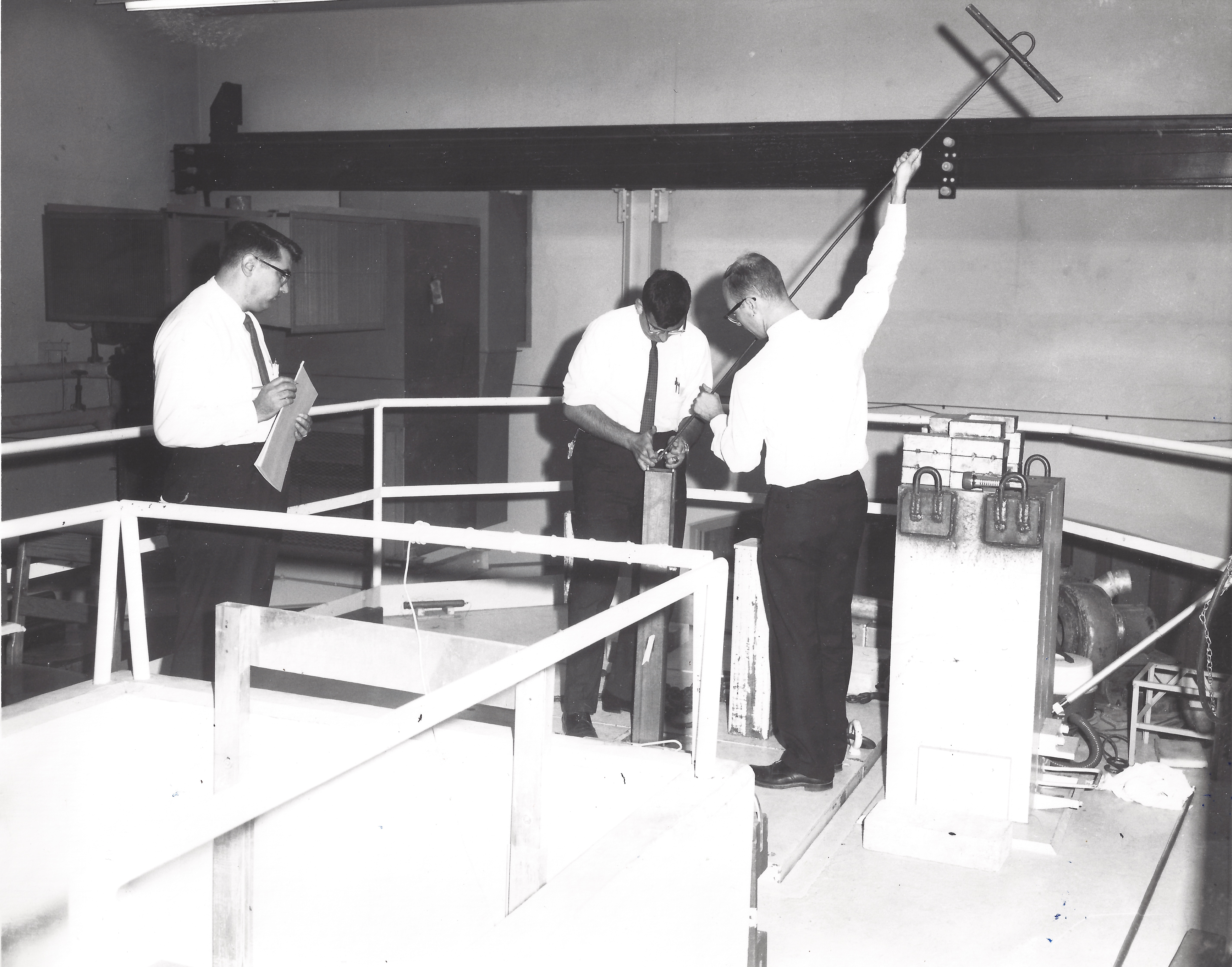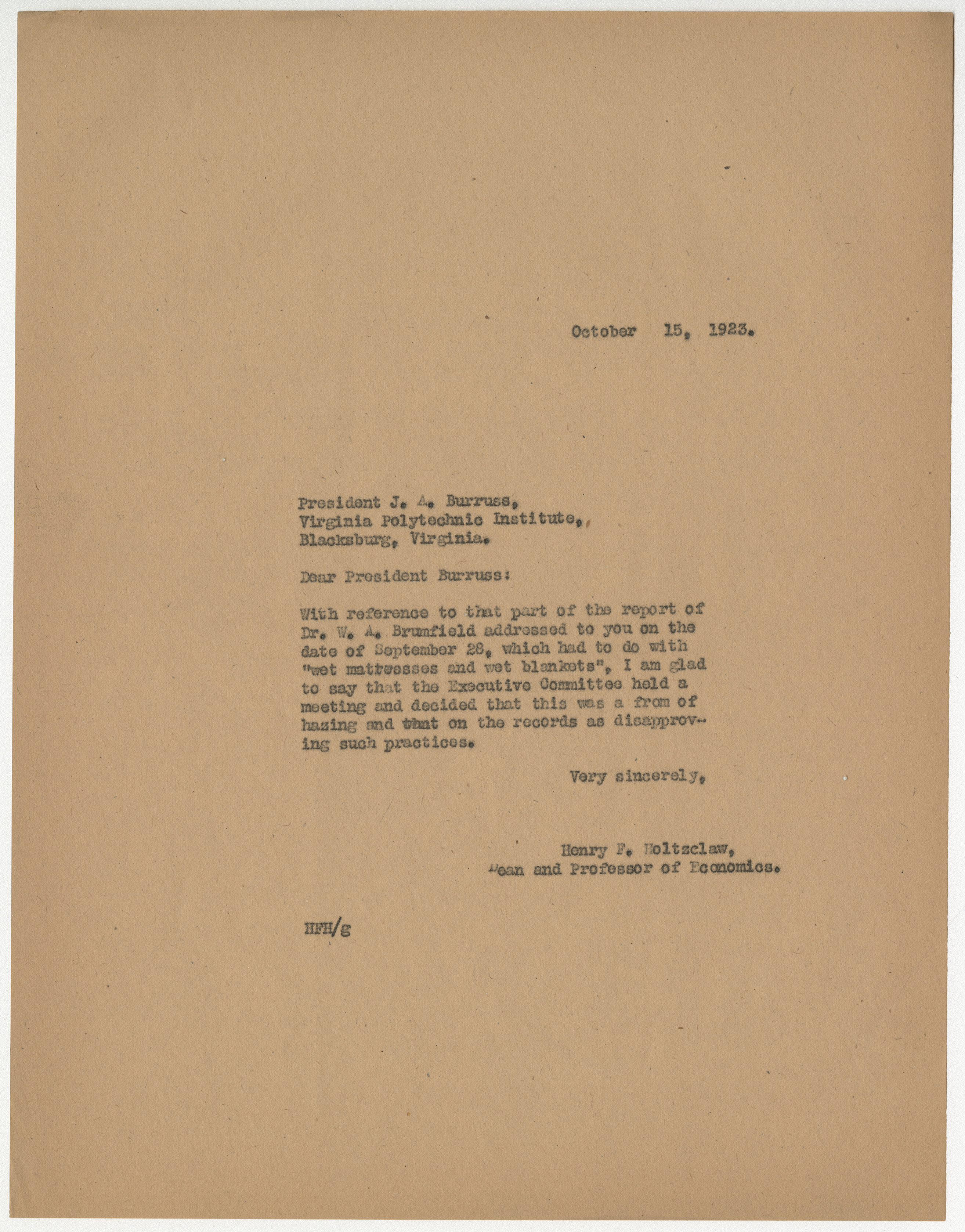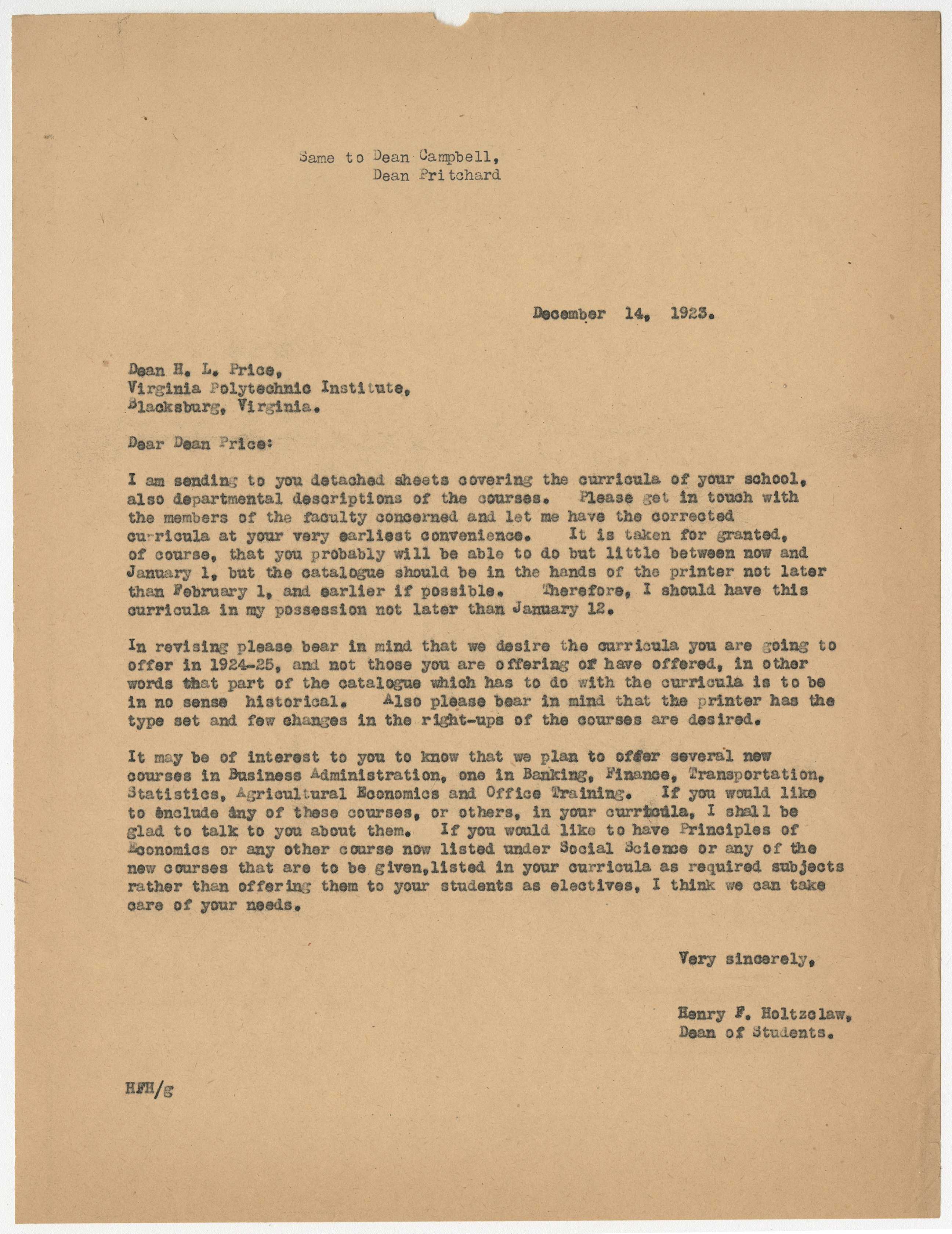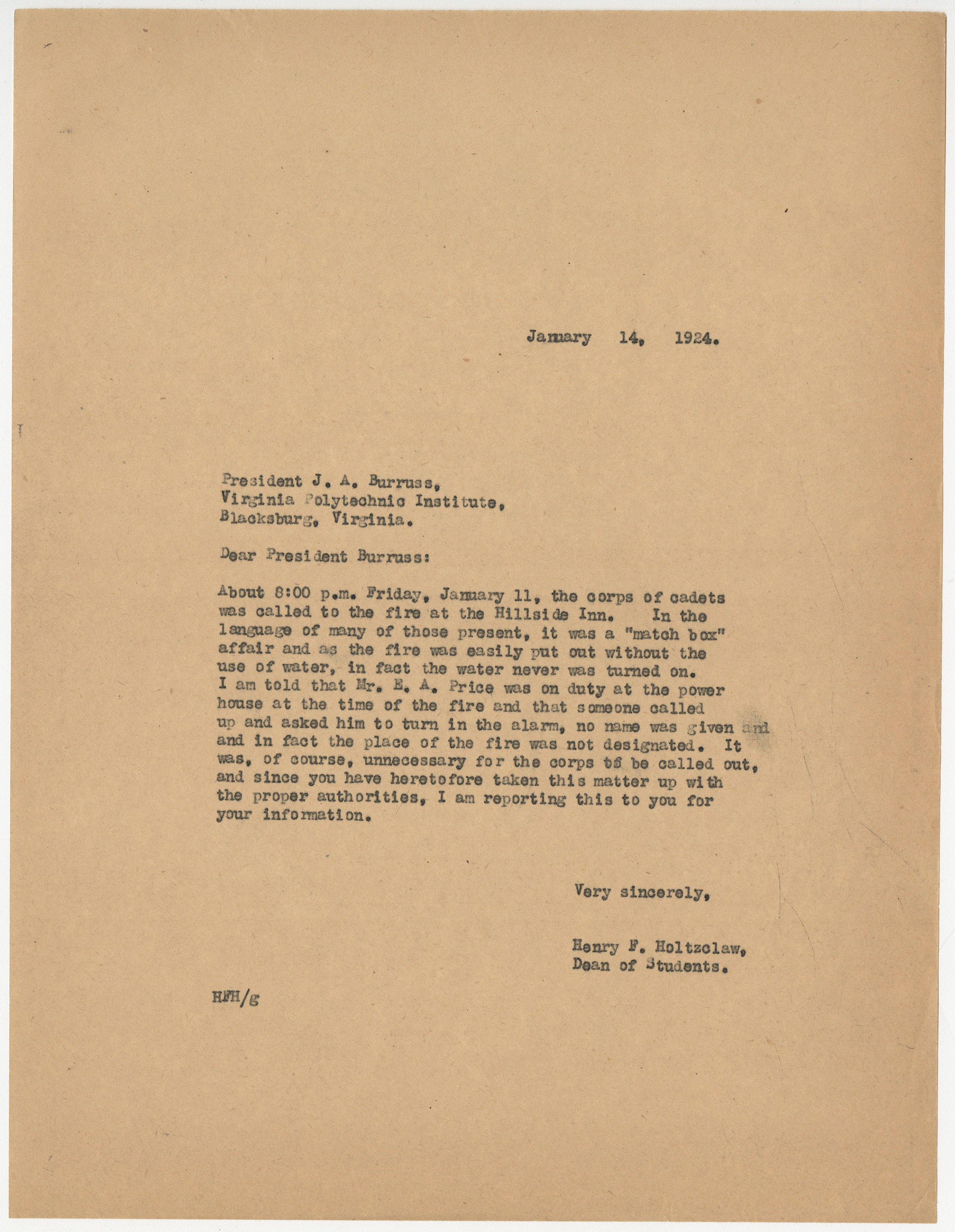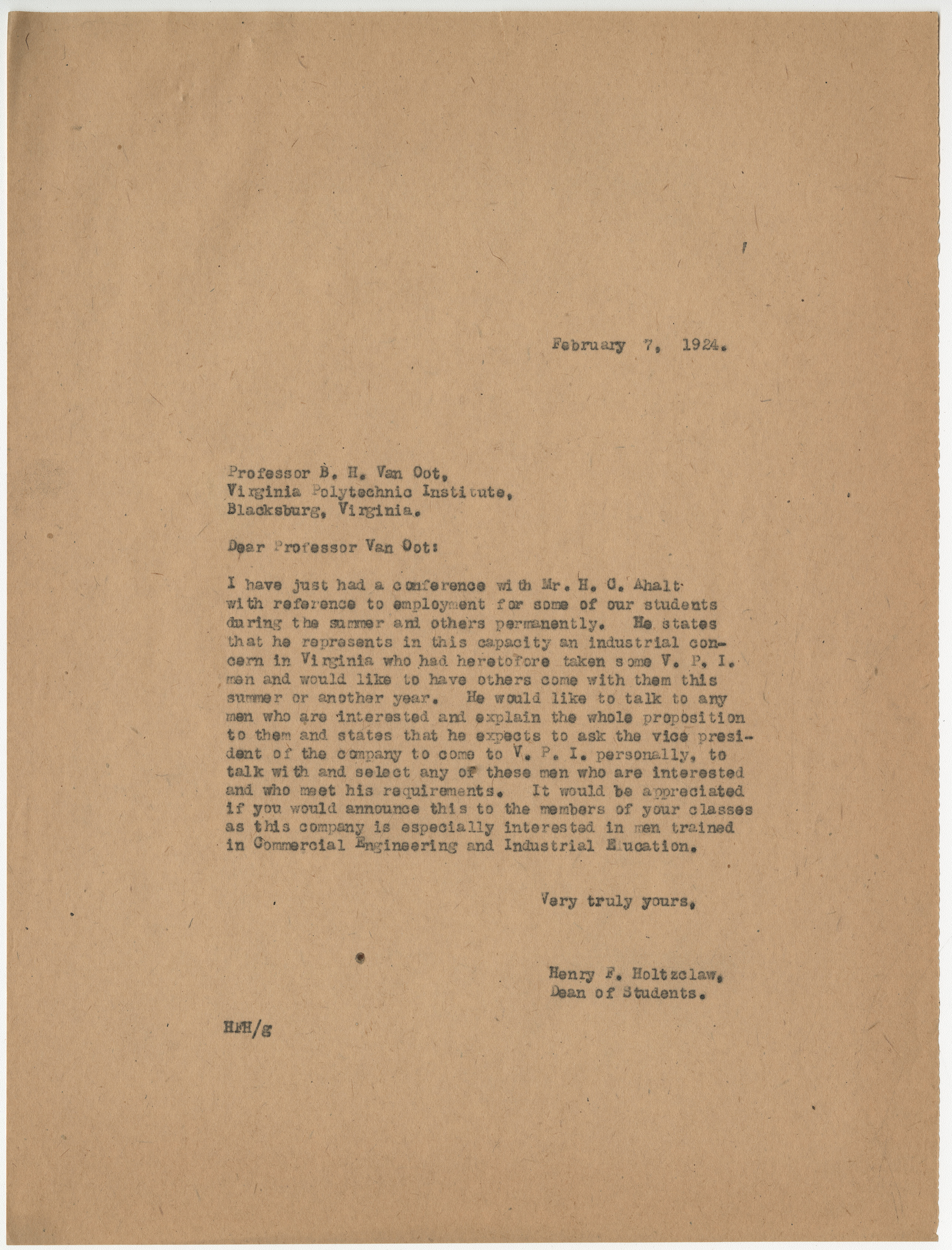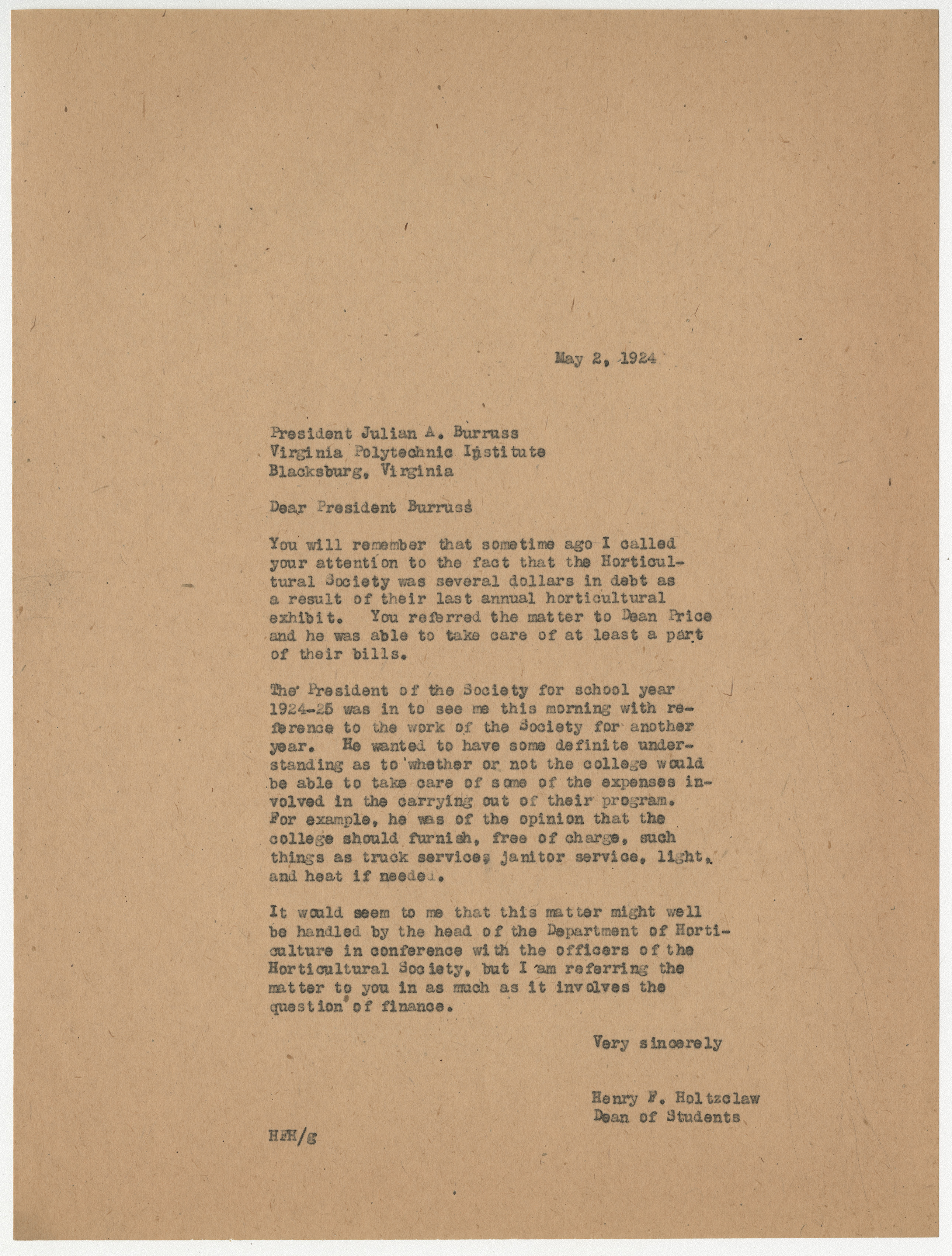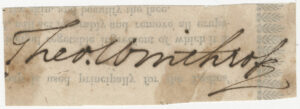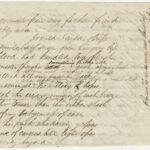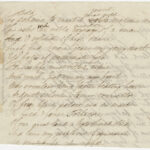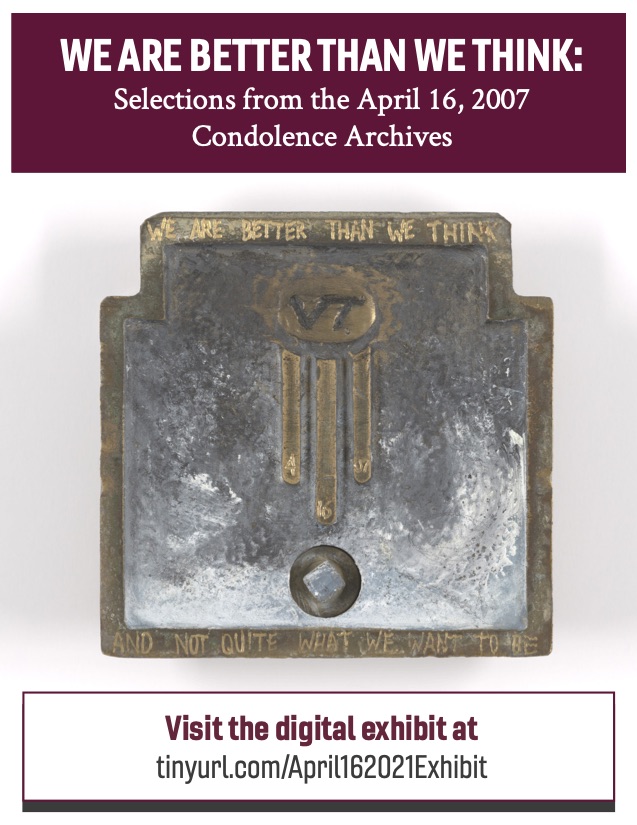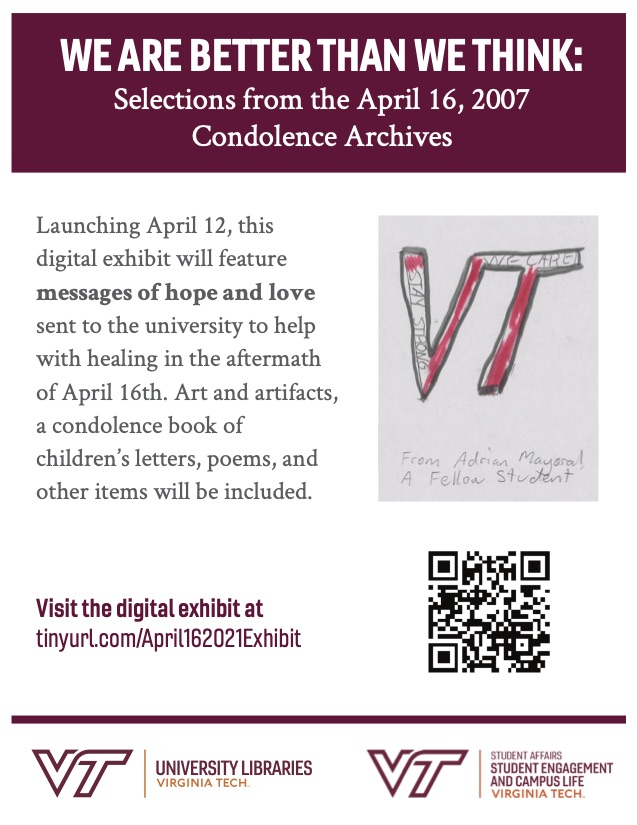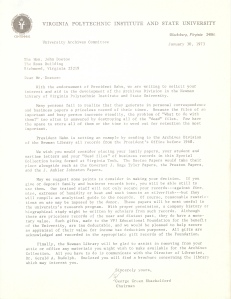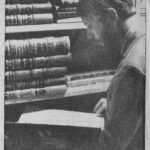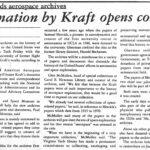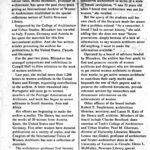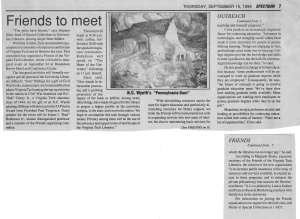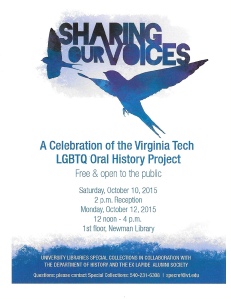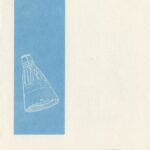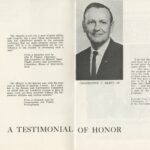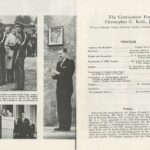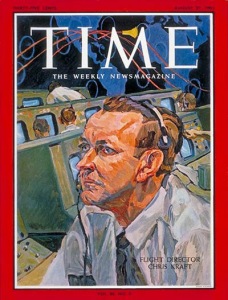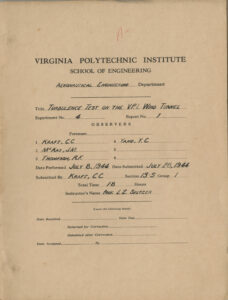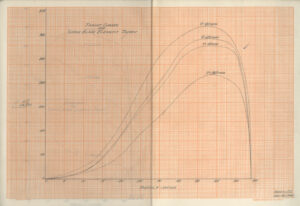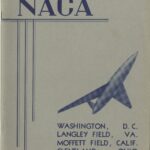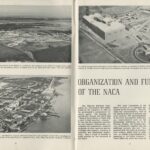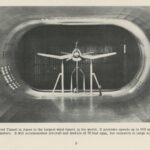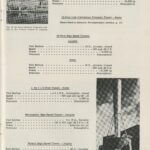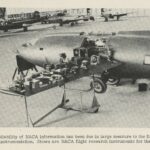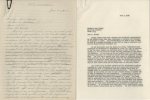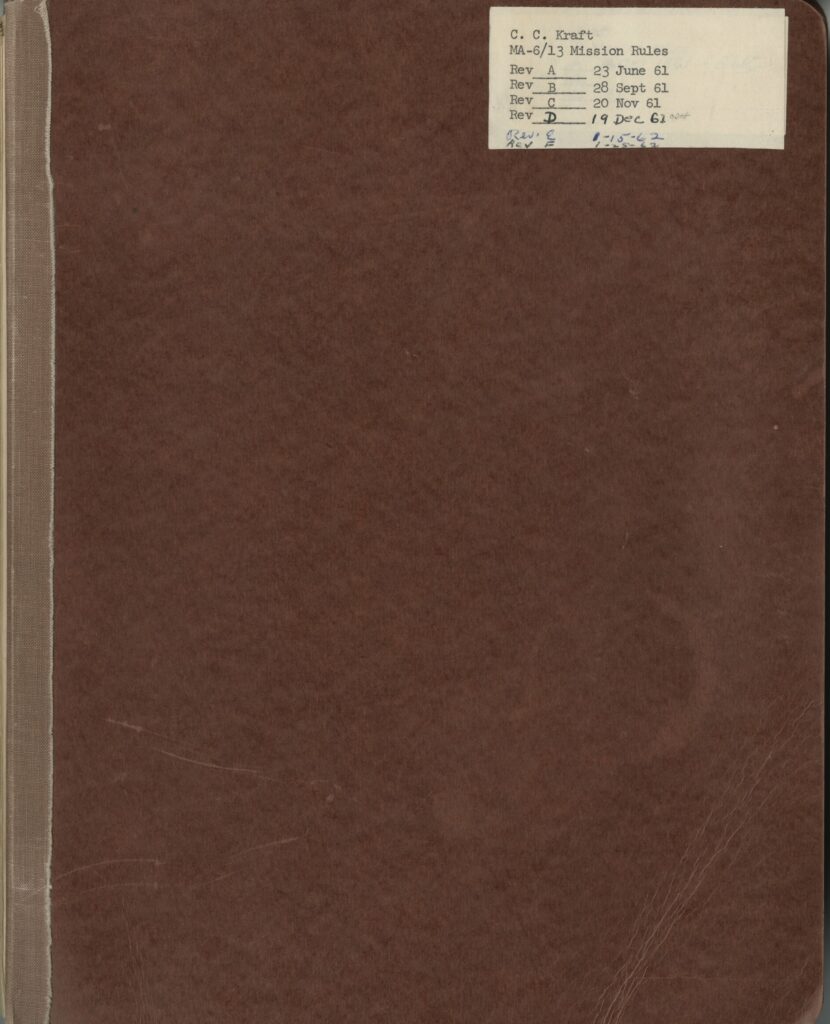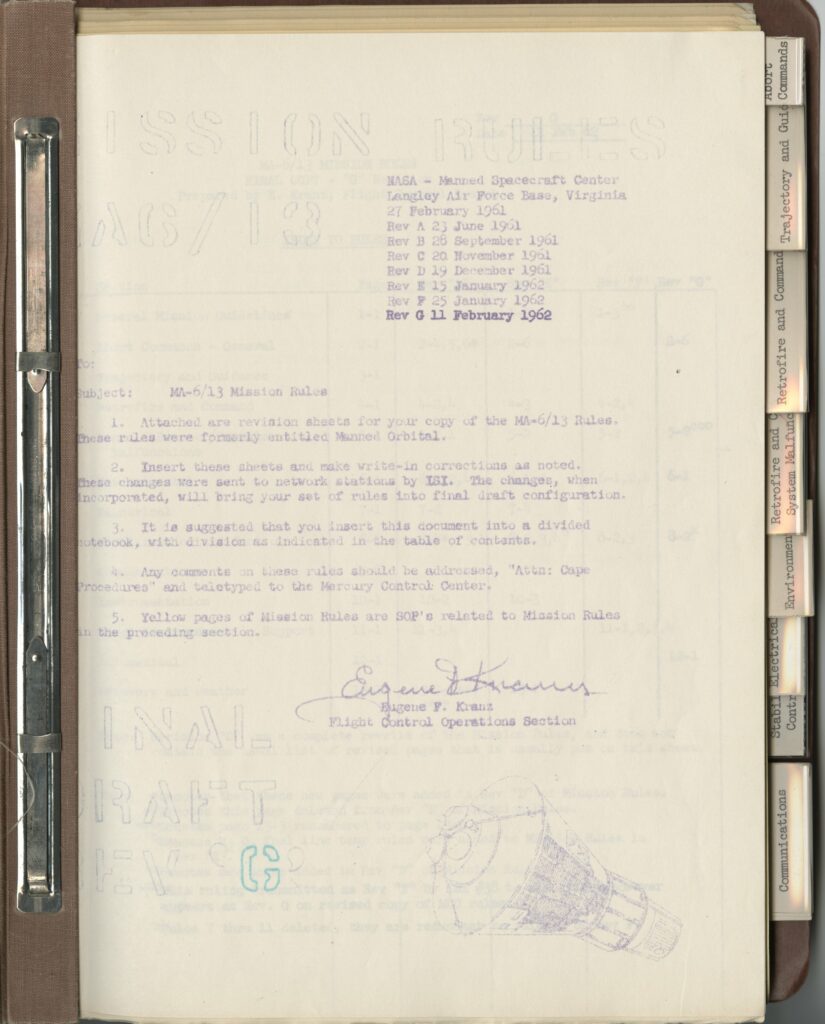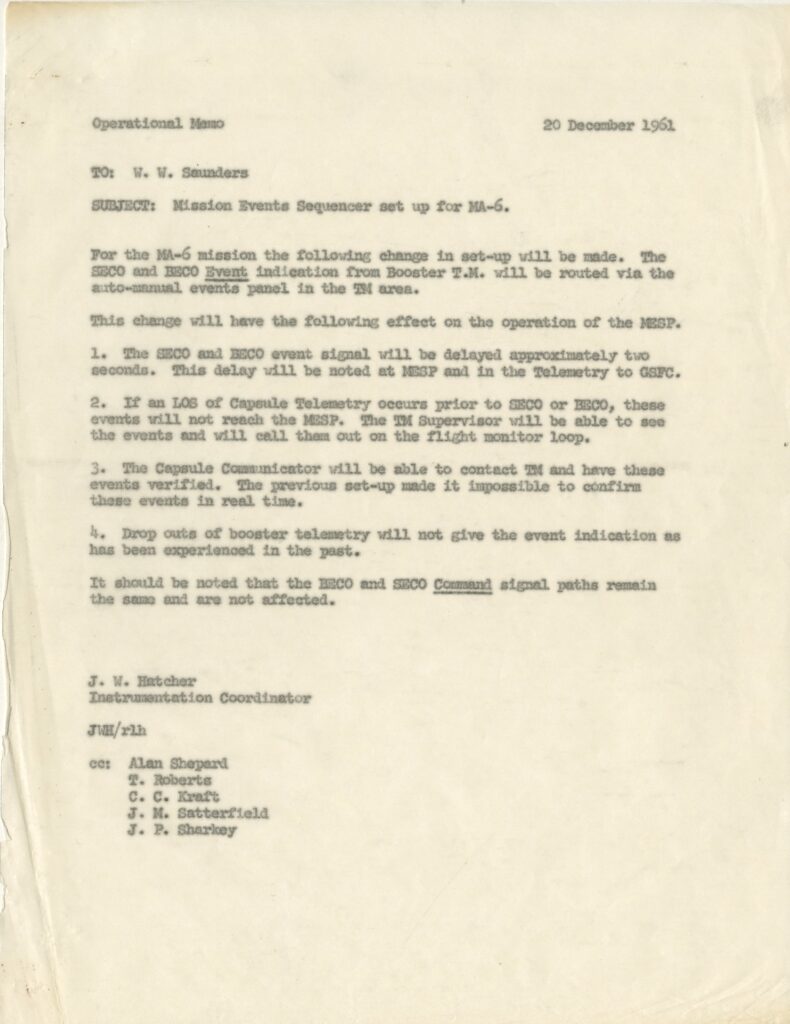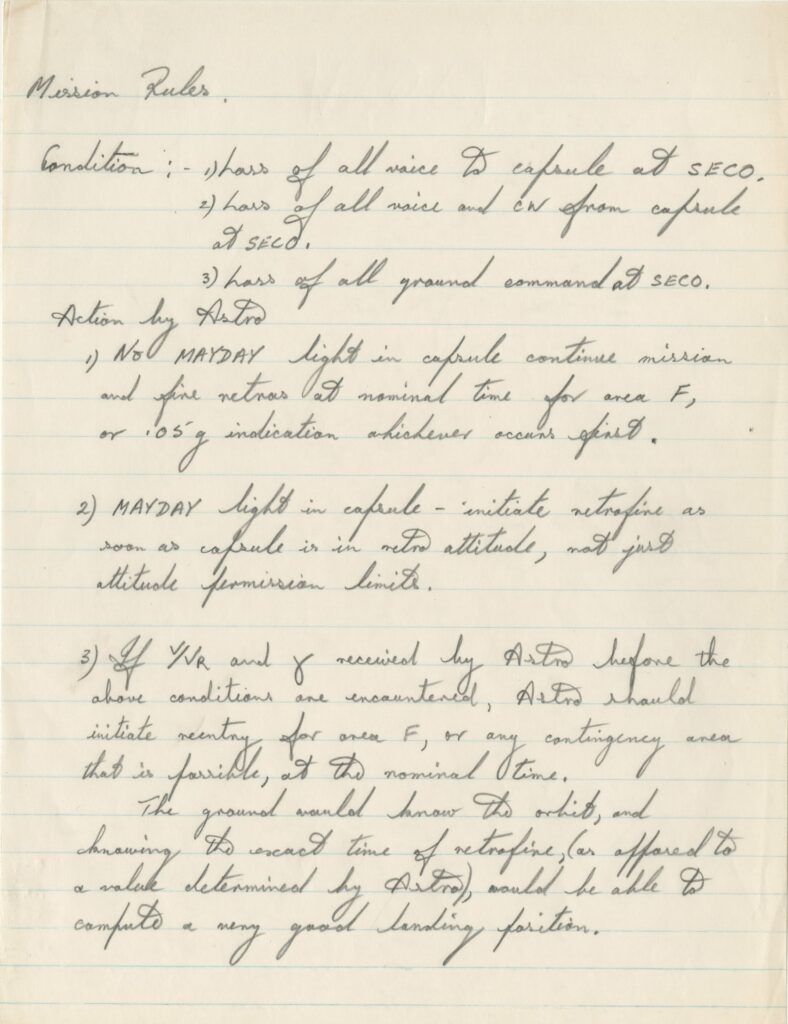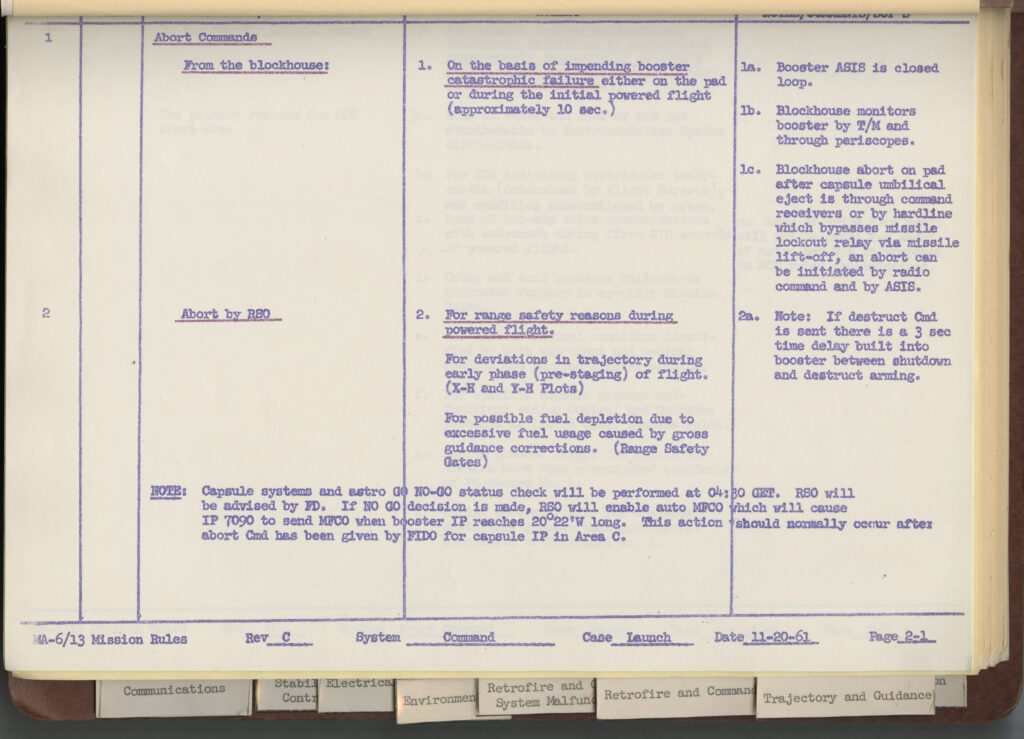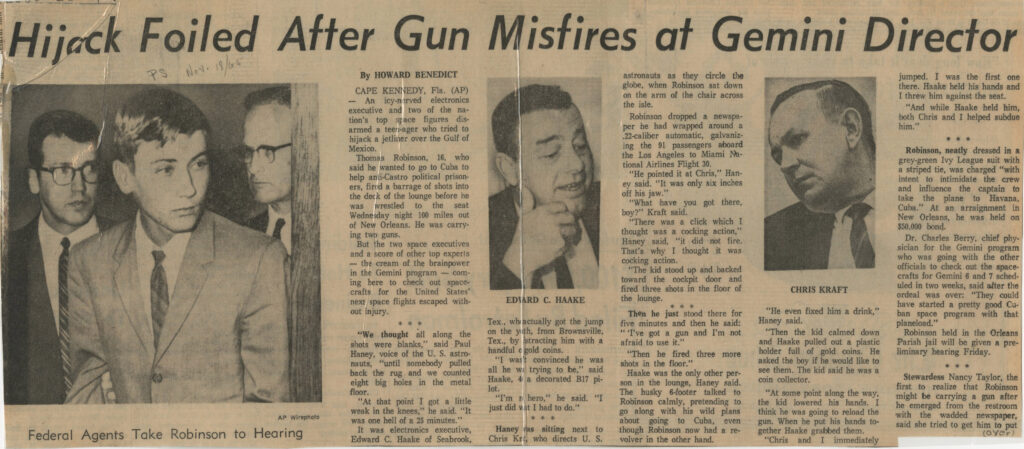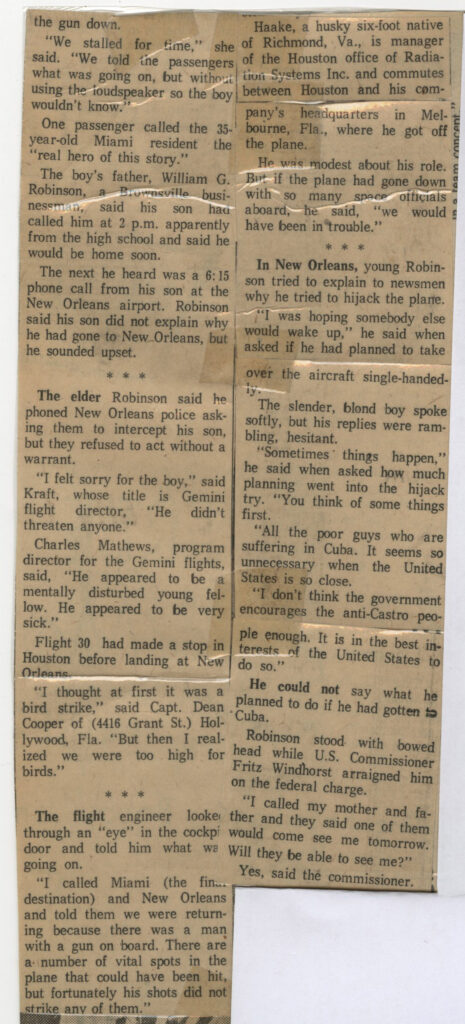As we’re well into college football season, I thought this would be a good time to share a letter, relevant to the game’s history, written by a one-time Tech player and found within our collections:
Born in Wythe County, Virginia, in 1880, John Sanders Counselman matriculated at Virginia Agricultural and Mechanical College and Polytechnic Institute (often referred to as VPI, for the sake of much-needed brevity) at the age of twenty. Upon graduating with a bachelor’s degree in science in 1903, he was awarded a fellowship in surveying and drawing, and he earned a master’s degree in civil engineering the following year. Soon afterward, Counselman accepted a position as instructor of mathematics and civil engineering at the Georgia School of Technology (today, Georgia Tech).
On January 7, 1906, Counselman sat down to write a letter to his friend and former civil engineering classmate, Louis O’Shaughnessy, to acknowledge receipt of the solutions to some shared mathematical problems. Counselman then discusses at length a particular problem involving the area of a cone. Those who aren’t math nerds might be forgiven for not reading past the opening paragraph, but those who are football nerds might regret the decision.
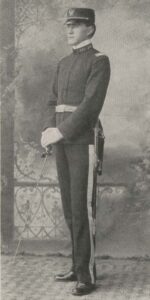
In addition to his mathematical prowess, John Counselman displayed great skill on the gridiron from 1901 to 1903, starting at fullback for VPI’s team, then most often known as the Polytechs or the Techmen. For his abilities, Counselman was named Second Team All-Southern in 1901. He may have received many more accolades had he not been overshadowed on the playing field by VPI’s legendary halfback, Hunter Carpenter.
After discussing mathematical conundrums, Counselman quickly transitions to other matters, noting that he’d recently sent O’Shaughnessy a “copy of the system of F. B. … [m]ost of it being Heisman’s.” It takes only a moment to realize that “F. B.” is “football,” and that “Heisman” is none other than John W. Heisman, the iconic coach for whom college football’s Heisman Trophy is named. Over a 35-year career as a head coach, Heisman amassed a record of 186-70-18, and he’s credited with a number of early football innovations, among them the forward pass. In January, 1906, Heisman had just finished the second season of what would be a 16-year stint at Georgia Tech. Counselman apparently served as assistant coach during both of Heisman’s first two seasons at Georgia Tech.
I find no record of Heisman having published anything about his system of coaching prior to his 1921 book, Principles of Foot Ball (or “Football,” in subsequent editions), but it’s obvious from Counselman’s letter that the coach had already made a name for himself as a football guru.:
“The old maxim that tricks won’t win games in F. B. is true till Heisman takes charge of affairs, and then the ‘saying’ is false. Since his migration to the South since when he has coached Auburn Ala. 4 years, Clempson [sic] 4, [Georgia] Tech. 2 and coached 3 yrs prior to them, he has lost few games.” He continues by lauding Heisman’s system and claiming that a team coached by him would defeat any team of similar skills. Counselman expresses wariness of running any of Heisman’s “trick plays,” however, concluding that “no coach can make them go, but Heisman.”
Counselman then diagrams and describes a favorite play of Heisman’s, one that he had used when coaching Clemson against VPI in 1901. “You see that Quarter faces slowly to the left, taking one step in that direction but not moving one foot. The Back who finally takes the ball hides behind the Q and the two other Backs running between these two completely hide the runner. Suddenly the Q shoots thro [through] in front of them, taking out any defensive player in the road.” (Whether or not the play itself was successful, Clemson fell to VPI in that game, 11-17.)
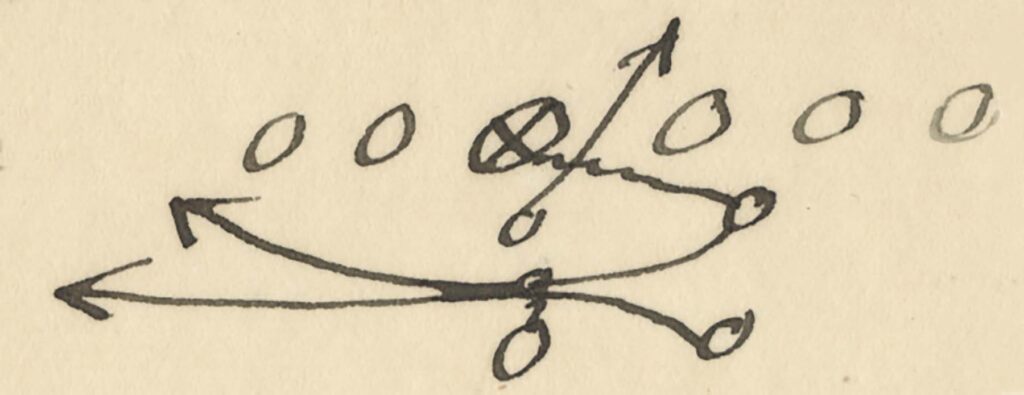
Why Counselman would be showing Heisman’s plays to O’Shaughnessy is something of a mystery. By early 1905, O’Shaughnessy had been working as an instructor at VPI for nearly a year, but I find no record of his having been associated with the football team in any way. As athletic programs were then less structured than they are today, however, it’s not unlikely that members of the faculty may have been pro viding informal assistance to VPI’s head coach at the time, Clarence “Sally” Miles.
Counselman’s letter is written on the letterhead of the Georgia School of Technology, but the envelope was posted from Ann Arbor, Michigan, and by the time of its writing, Counselman was halfway through a year’s study at the University of Michigan. Counselman would soon be searching for a job. The former Polytech writes that Heisman has been using his influence to win him a teaching/coaching position at Mississippi A. & M. (today Mississippi State University), but he expresses reservations about taking the position: “[T]heir math course strikes me as being rotten.”
Counselman then discusses the future of college football: “What is going to become of the game? They are surely giving it h—. Representation from the Big Nine meet next Friday in C— to discuss it, and they are discussing it lots in the East. Well I don’t care my self what they do. It is a brutal game and one that I got damn tired of playing at V. P. I. I love to watch it, however, and am of the opinion that the more they open it, the more dangerous it will become. I think Billy Ried [sic] is correct in his views and especially when he says that those who expect the roughness to be eliminated had as well abandon the game entirely. “
As indicated by Counselman, representatives of the Western College Conference, the “Big Nine,” met in Chicago that January to address the problem of a game that had become increasingly violent. Between 1900 and 1905, according to the Washington Post, more than 40 players died from injuries sustained on the playing field. In the east, talks were held in the White House. Together, these and other reform meetings resulted in a number of changes that made the game safer and led to the formation of a rule-making authority, the Intercollegiate Association of the United States, now the NCAA. (The “Billy Ried” to whom Counselman refers was William T. “Bill” Reid Jr.,” who coached Harvard in 1905/1906 and, despite initially resisting changes, would eventually play an important role in reforming college football.)
In the end, Counselman didn’t get the position in Mississippi. Later in 1905, he was hired as physical director at Cumberland University (Lebanon, Tennessee), where he also served as football coach. On October 28, Counselman faced his former boss when Cumberland met Georgia Tech on the playing field. Despite having firsthand knowledge of Heisman’s system and having a hand in developing it, Counselman was no match for his mentor. Georgia Tech came away with an 18-0 win, largely credited to the “double-pass” play, on which Counselman himself had drilled the Georgia Tech players the previous season.
Counselman ended his first season as head coach with a 5-4 record. The following year found him at Howard College (now Samford University) in Birmingham, Alabama, coaching the team to a respectable 6-2-1 record in his first year. The following season, at 3-6, was much less successful, however, and after losing the first two games of the 1908 season, Counselman resigned. It was his last experience as a head coach. Counselman’s career in education continued, however. He remained in Birmingham, heading the Central High School Mathematics Department until 1920. He also had stints as professor of mathematics at the College of William and Mary and superintendent of schools in Tallahassee, Florida.
Counselman could never quite give up participating in the game he loved. Beginning in 1912, his name appears among those officiating games at Auburn. The former fullback continues to be listed as a game official in various directories and game summaries through 1924. John S. Counselman died in 1955.
This isn’t Louis O’Shaughnessy’s first appearance in our blog. More can be found here. And more about the J. S. Counselman Letter (Ms1993-009) may be found here.







